Appreciate non -heritage and food!You don’t want to miss such Lu Feng Canal
Author:Good guest Shandong Time:2022.08.30
The Beijing -Hangzhou Grand Canal, which has flowed for thousands of years
Nourish the bright town of famous cities
Breeding a unique non -heritage culture

August 25th to 29th
7th China Intangible Cultural Heritage Expo
Held in Jinan
"Xinxin Rong" non -heritage exhibition along the Grand Canal
Debut
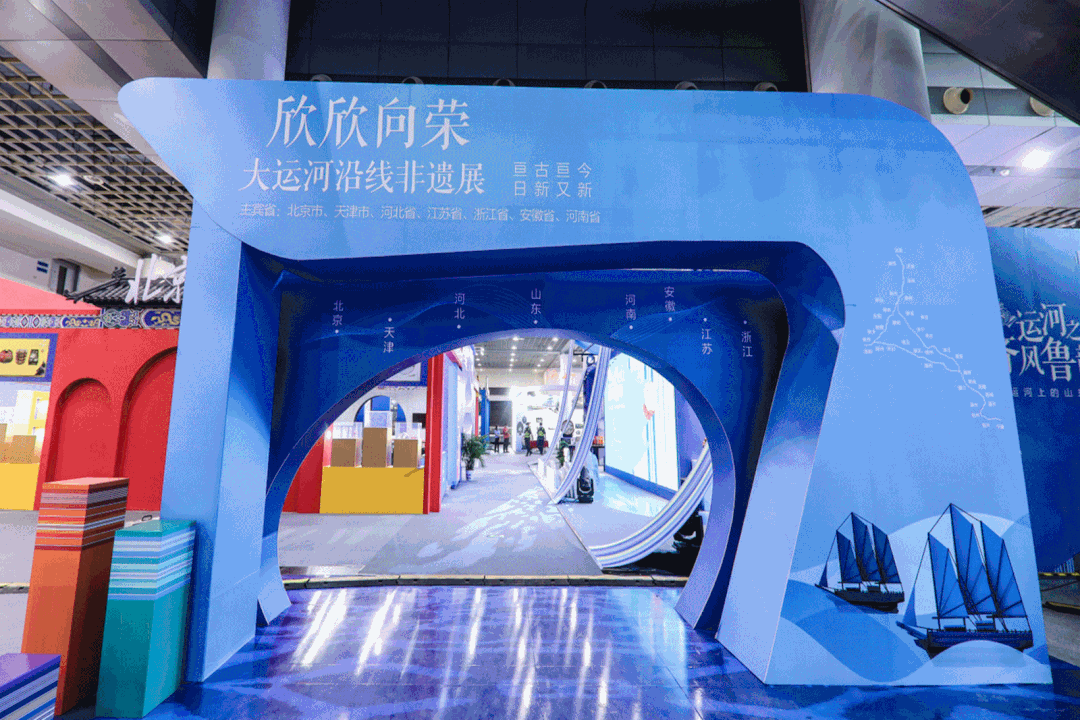
Today, along with Haoke Jun
Beijing -Hangzhou Grand Canal (Shandong section)
Appreciation of non -heritage, delicious food
Feel the charm of the canal non -heritage!
-Jaozhuang-
Non/Heritage/Bao/Tibetan
► 琴 qin opera
儿 Experience Location: Shipbuilding Street, Ancient City, Taierzhuang
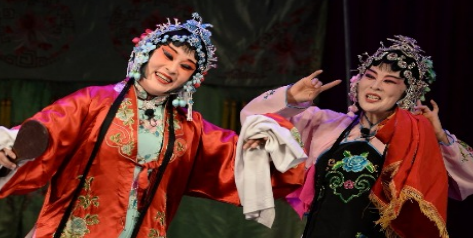
Liuqin opera, one of the traditional opera dramas, is mainly popular in the vast areas of Lunan, northern Jiangsu, and Su Lu, Henan, Anhui, and has a history of more than 200 years. During the Jiaqing and Daoguang period of the Qing Dynasty, stray artists in Zaozhuang, Shandong, and Linyi combined the local rap art forms such as elbow drums, flower drums, and four -sentence cavities, and borrowed from Liuzi opera, mountain cavity, pull fiber, etc. A local music form that is gradually evolved. Liu Qin's performance has a rough, warm, simple and healthy style and a strong atmosphere of life.
Yushan Pavilion Pavilion Shadow Show
儿 Experience location: Taierzhuang Ancient City Non -Heritage Cultural Street

Shadow play is an ancient and widely spread folk art form. Shadow Pavilion shadow drama folk music, opera, music, handicrafts, paintings, paintings and paintings, with the "menstrual magic, nine cavity, eighteen tone, seventy -two humming "Features. Behind the white curtain, the artists manipulate the opera characters with their hands, while singing the story with the local tunes, and at the same time, with a percussion instrument chord, they have a strong rustic atmosphere.

Non/Heritage/Beauty/Food
饪 Weihu fish feast cooking skills

Weishan Lake is the largest freshwater lake in Shandong Province. The famous Beijing -Hangzhou Grand Canal passes through the Weishan Lake. Since ancient times, it has been an important water passage. According to legend, the Emperor Kangxi took a boat to the South of the Beijing -Hangzhou Grand Canal, and the chef made a total of eighty -eight and sixty -four fish and vegetables for Emperor Kangxi. Emperor Kangxi's Emperor said that he was beautiful, especially the "carp jumping dragon door" made of four -hole carp, which was appreciated by Emperor Kangxi. The post -fish banquet is known as the "Weihu Fish Banquet" and has become a tribute to the royal family.
Zaozhuang spicy chicken cooking skills
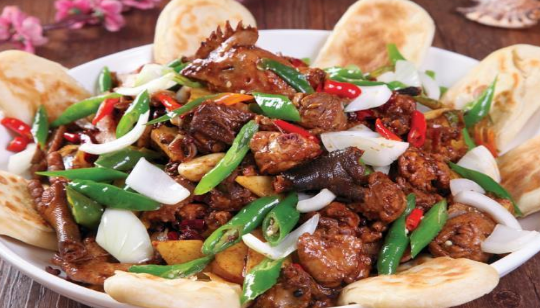
According to legend, in the late Qing Dynasty, there was a chef named Xu Zihua in the north of the city of Lincheng County (now Xuecheng District, Zaozhuang City). It was once a kitchen in the Qing Royal Palace. In his later years, he opened a restaurant here and created " "Spicy Chicken". At that time, the Beijing -Hangzhou Grand Canal was the transportation hub pier of the North and South China Shipping, and there were endless streams of merchants. Zaozhuang spicy chickens were rumored to be at that time, and they were admired by people who love food in the world.
-Goning-
Non/Heritage/Bao/Tibetan
► ► 大 大 大
济 Experience location: Jining Confucian Temple
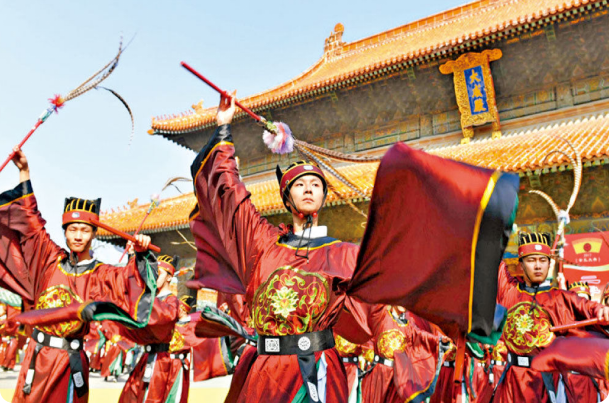
The sacrifice is the grand ceremony of the Huaxia nation in order to respect and miss the Confucius of the Holy Pioneer Confucius. It is a comprehensive art performance form that integrates music, songs, dances, and rituals. It is a miracle in the history of the world's sacrifice and the history of human culture. There are four parts: the Kaicheng Ceremony of the Old City of Ming Dynasty, the opening ceremony of the Confucius Temple, the modern public officer and the traditional sacrifice of the Kaicheng Ceremony of the Ming City. All etiquette "Biography, Clean, sincere, and respect." There is a saying that "Wenle knows virtue, watches dance, understands the heart of Li Mingren, the righteousness is lingering, and the neutralization of education", which shows the grand occasion of "eternal rituals and eternal clothing, and the eternal clothes."

Non/Heritage/Beauty/Food
饪 Confucius cuisine cooking skills

The history of Kongfu cuisine can be traced back to 272 BC, and the inheritance of the past and innovation can be continued. The formation of the Confucius cuisine is mainly due to the members of the Confucius. Adhering to the legacy of Confucius, adhering to Confucius' meals and tirelessness, they are drinking. The production of dishes is extremely sophisticated. It requires not only the essence, detailed work, strict heat, focusing on taste, but also happen to change the adjustment of the adjustment. It should be fresh and full. By the end of the 19th and early 20th century, Confucius cuisine had formed a unique cuisine of color, fragrance, taste, shape, device, and meaning.
技 Funted tofu production skills
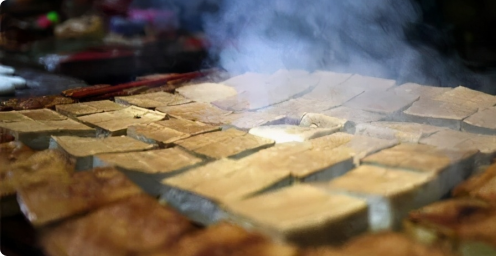
"Don't take a bite of smoked tofu, let alone Qufu", it is widely circulated in Qufu City. Qufu smoked tofu workshops was mainly concentrated in villages on both sides of the south of Sihe, which dates back to the Ming Dynasty. It is a traditional specialty snack with unique flavor, and it is also a deliciousness in Kongfu cuisine. According to [Qing] Gu Zhong's "Raise Little Record" records "Good tofu is extremely dry, salted, washed and dried. Plas to delicious oil, wonderful." The surface of the smoked tofu is brownish yellow, the surface layer is strong, the inside inside Fine white and tender, with a strong wooden or savory flavor.
-Tai'an-
Non/Heritage/Bao/Tibetan
► ► ► ► ► ► ► ►
泰 Experience location: Taishan Scenic Area
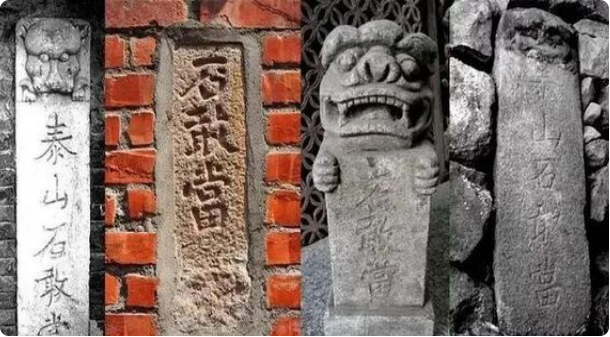
Shi Dan was worshiped in Lingshi, which originated in ancient times, and has experienced three periods: Shi Gangdang's budding stage, Shi Gangdang's mutation stage, and prosperity. The earliest records in the history books were Shi Gang as the Western Han Dynasty "Urgent Chapters": "Master Tiger, Shi Dan Dang, not invading, Long Weiyang." After the Ming Dynasty, Shi Dan was closely integrated with the worship of Dongyue Taishan. From "Shi Guang" to "Taishan Shi Dan Dang", its functions also experienced the earliest "town house" to "Huasha" to "cure" , "The Gate God", "Evil Evil", "Windproof" and so on. The "auspicious and peaceful culture" expressed by Taishan Stone reflects the psychology of people's general desire and peace, and combined with the belief of "Chinese soul returns to Taishan", reflecting the humanistic spirit and cultural creativity of the Chinese nation. ► ► ► ►
泰 Experience location: Taishan Shadow Film Art Research Institute
Taishan Shadow has a long history, and it is related to its records as early as the ancient book of the Ming Dynasty. There are proverbs "Deng Taishan do not watch the Yaoshan shadow drama, do not watch the film, do not know the courtesy". Taishan Shadow's performance method is the most unique. A drama requires up to two people, namely one person accompaniment, one person manipulating the film performance, and one person to perform a show if necessary. In terms of production, Taishan Yingying's pure donkey skin, the knife method is concise and fast, the coloring contrast is strong, containing the bold folk emotions of Shandong people. Summary as much as possible on the carving, most of the characters' shapes adopt realistic techniques, with a knife and simplicity, rough and bold. The color is strong in color, and the traditional color of folk colors such as red, green, yellow, and purple. There were more than a dozen shadow and drama classes at the foot of Taishan in the early days, and they were active in the streets and alleys of Tai'an City.
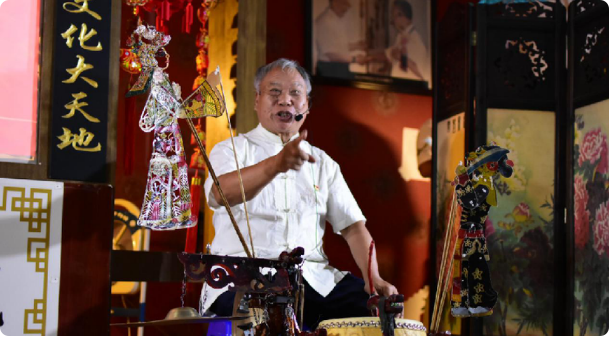
Legend of Water Margin
平 Experience location: Dongping Water Margin Film and Television City
"Water Margin" is one of the four classic literary books in my country. The birthplace of the book is Liang Shanbo, "Eight hundred miles". Dongping Lake is the relic waters of Gu Liangshanbo. Dongping Lake is a region with a dense relic of the "Legend of Water Margin" and a very concentrated story of the legend. During the Northern Song Dynasty, the Thrhashu Junctions gathered in Yiliangshan Dazhai, and the main activity areas were in water and around it. Water Margin broke through the sky, "walking for the heavens", the warrior and the army, the thief thieves, the righteousness and wealth, and the help of the crisis and the poor, leaving many long -lasting and popular legendary stories. The legend of Water Margin, as the main composition of the historical and cultural history and culture of the Water Margin, has high academic value and literary value.
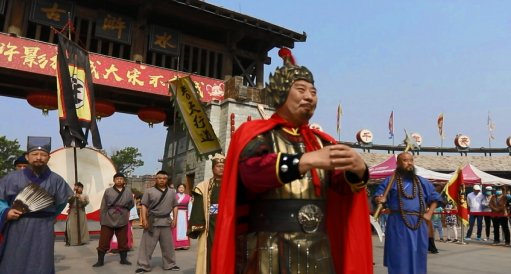
Non/Heritage/Beauty/Food

► ► ► ► ► ►
Taishan Fengzen Royal Diet refers to the emperor in the world in the world, the people of Zhengtong, and the rich grains, and in order to report the merits and earth, they will worship the heavens to the top of Taishan. The emperors and monarchs visited Taishan in the past. The royal chefs must follow the emperor to come to Tai'an for a meal. On the one hand, they must meet the needs of the emperor. On the one hand, they must entertain the ministers to soothe the world and gradually formed the "Taishan Royal Dining Banquet". Feng Chan Yushan is a theme feast derived from the combination of the emperor's banquet and the government's catering culture. It has a generous cultural heritage.
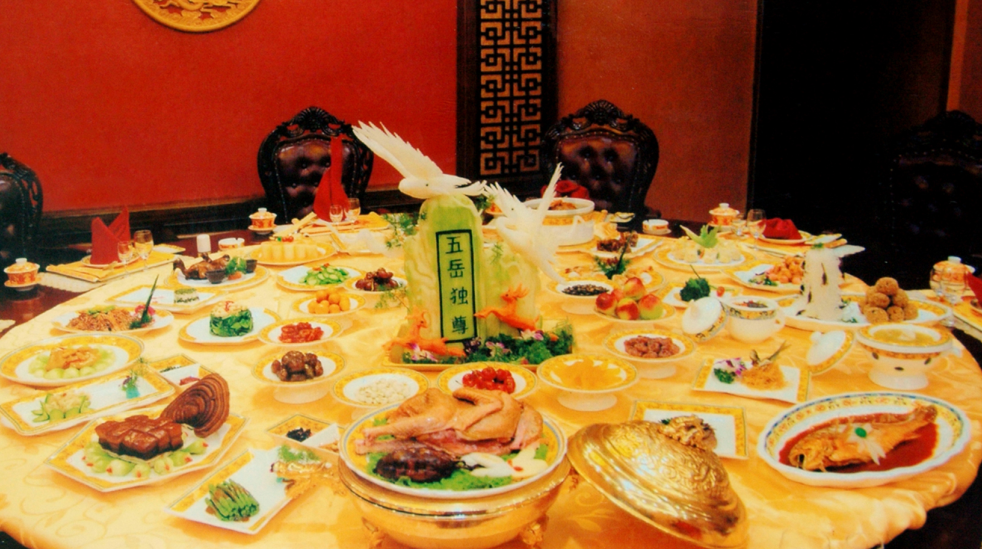
火 Taishan donkey oil fire burning production skills
Taishan donkey oil burning is a famous snack in Tai'an. Its color is beautiful, as thin as thin paper, and it tastes crispy. According to legend, more than two thousand years ago, when Emperor Hanwu seal Zen Taishan, he was stationed in Fenggao County, Fenggao County. In one meal, when some food officials were doing the staple food of the army, they used the local donkey oil and other seasonings to season the seasoning and abandoned them into roasting. The mature "cake" is golden, and has sesame seeds on both sides, which emit a seductive fragrance. The food officer worshiped the roasted "cake cake" to the Emperor Hanwu to taste. Emperor Hanwu Long Yan Yue, the filming was called, for a while, the "Taishan donkey oil burned".
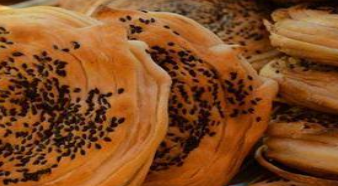
-Liaocheng-
Non/Heritage/Bao/Tibetan
烧 Linqing Gong brick firing skills
临 Experience location: Linqing Cultural Museum
During the Yongle period of the Ming Dynasty, Zhu Xi, the ancestor of the Ming Dynasty moved to Beijing, and built the Royal Palace Garden for more than ten years, and built the Royal Palace Garden. To this end, it was specially established in Linqing to build bricks for burning buildings. The production of Linqing Guanyao continued until the Qing Dynasty, reaching more than 500 years. There are about hundreds of Linqing brick kiln in the Ming and Qing Dynasties, distributed along the canal, with a range of 30 to 40 kilometers. There are tens of thousands of kiln workers. After the middle of the Ming Dynasty, the products of Linqing Kiln became the main material of the architectural palace, called "Linqing Gong brick". The soil quality of Linqing has no impurities, and the sand viscosity is appropriate. After burning into bricks, "the sound of hitting the sound, the non -pervasiveness, hard and strong, non -alkaline and not eroding." At present, the Beijing Forbidden City, Temple of Heaven, Earth Altar, Temple, Moon Altar, Bell Tower, Temple of Wenzi, Guozijian, and Lintong Bricks on the buildings of the city gate and the buildings of each king's house can be seen. The life -long bricks used in royal cemetery in the thirteenth tomb of the Ming Dynasty, the Eastern Tomb of the Qing Dynasty, and the Qingxi Mausoleum were also burned by Linqing. These tribute bricks are not alkaline or eclipse, and they have sound.
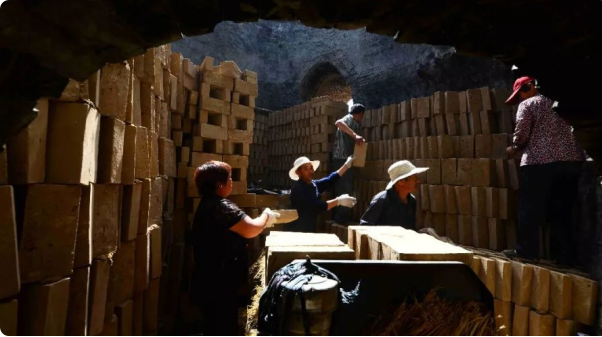
Liaocheng Gourd Carving Skills
聊 Experience location: Liaocheng Old Town
During the Ming and Qing dynasties, Dongchang Mansion, one of the nine commercial ports along the Beijing -Hangzhou Grand Canal, was the hub of the political, economic and cultural of the Luxi Plain. The boats and cars were gathered here. Dongchang has used carving gourds since ancient times. In this case, carved gourd with local characteristics has become an important business product for farmers on both sides of the canal. Dongchang gourd carvings are sophisticated, the carved work is pure, the lines are smooth, the patterns are rich, the production is excellent, and the distinctive regional characteristics are present. In the long history of development, the inheritance of Dongchang gourd carving skills is strictly carried out in accordance with the way of the teacher and apprentices, and the generations are endless.版 版 ► ► ► ► ► ► ► ►
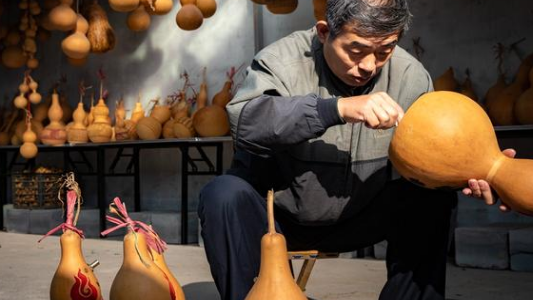
昌 Experience location: Gu Lou Dong Street, Dongchangfu District
Dongchangmu version of the year began in the Tang Dynasty. First, it appeared in the form of door god paintings. It is also known as the artistic magic of Chinese folk art treasure houses with Yangjiabu, Weifang. The production of Dongchangfu wooden version of the New Year began in the Ming Dynasty. Dongchangmu version of New Year painting has the characteristics of the year of New Year's paintings and door god paintings. The composition is simple, the overall sense is strong, the shape of the characters is narrow and long, the nose, the nose and nose are thin and narrow, and the image is full and simple. There are rigidity in the softness; the color is soft, clear, and quaint. Because it is also located on the banks of the Beijing -Hangzhou Grand Canal, the business is booming, and the sales of Luxi, Lunan, Lubei County, and Tai'an, Jinan, Weixian and other places in Dongchang Mansion have arrived in Shanxi, Henan, Hebei, and Northeast China Essence
笔 笔 ► ► ► ► ► ►

昌 Experience location: Gu Lou Dong Street, Dongchangfu District
The brush is an important carrier of China's millennium cultural heritage and one of the representative symbols of traditional culture. Dongchang brush in Liaocheng, Shandong Province was inherited by the canal in Zhejiang Lake. As early as the Yuan Dynasty, it was produced. During the prosperous period of Liaocheng's Dongchang brushes in the middle of the Ming Dynasty to the Daoguang period of the Qing Dynasty, more than a thousand practitioners, most of them were sold to Shanxi, Hebei, Henan and all over the province. Created the 500 -year prosperity of the "Two Rings of Dongchang Workshop".
Non/Heritage/Beauty/Food

菜 ► ► ► ► ► cooking skills

The traditional food culture of Liaocheng has been developed under the influence of the business culture of the Grand Canal. Liaocheng's diet technology, flavor characteristics, and food customs are all affected by north -south exchanges. Gao's cooking skills have undertaken the essence of the food heritage of the food in Luxi in the past few hundred years of the Louxi. , Becoming a typical representative of Luxi flavor.
-Dozhou -
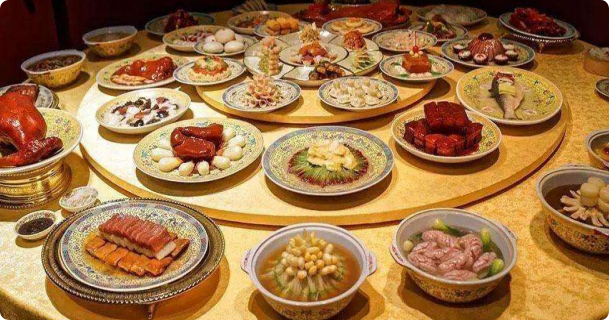
Non/Heritage/Bao/Tibetan
烧 Texas Black Pottery Burning Skills
德 Experience location: Texas Liangzi Black Pottery Museum
Texas Black Pottery originated from Longshan Culture more than 4,000 years ago. Its artistic value stems from its own unique craft characteristics. Its beauty, color beauty, carving, and decorative patterns are beautiful. And elegant, luxurious, simple and smooth ancient flavor. Texas Black Pottery is unique in terms of the choice of raw materials, the molding, firing of the utensils, or the surface decoration. Now it still maintains pure handmade. It takes the red cement of the Beijing -Hangzhou Grand Canal as the raw material, hand -made, hand -carved, hand -made light, and the ancient carbon reduction restoration method has maintained the most simple and elegant temperament of Texas Black Pottery. Today, there are about 100 products in Texas Black Pottery. Such as a variety of vases, flower pots, table lamps, pen holders, pork capsules, pancases, flower cans, etc. The style is novel and has its own characteristics.
Non/Heritage/Beauty/Food

制作 Texas steak chicken production skills

Texas's chopped chicken production skills originated in the Ming Dynasty and evolved from roast chicken. In the thirty -first year of Kangxi (1692), the prototype of Texas chopped chicken was arisen. With the efforts of a generation of generations, Texas's production skills were perfect. Texas's chopped chicken production skills should be made through 11 processes such as slaughtering, plastic surgery, coloring, and boiled chicken. It is equipped with 16 kinds of medicinal materials, which is made of honey juice, vegetarian oil fried, and refined. He was once known as "Shenzhou One Story" by Emperor Kangxi, and is known as "the first chicken in China". "There are many honors. Chicken chicks are delicious, fresh, tender, spiced bonelessness, salty moderate, and returning to Han. It is a high -protein and low -fat nutrient food.
醋 Wangjiayuanzi vinegar traditional brewing skills
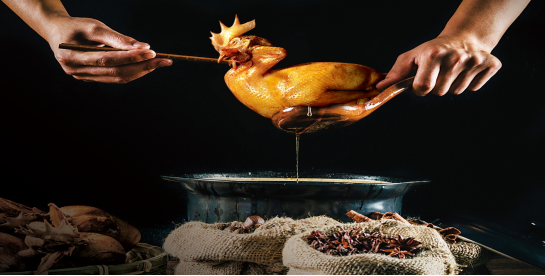
Wangjiayuan Zigui Dharma Brewing Vinegar Skills originated in the Yongle period of the Ming Dynasty. Wangjiayuan Zaomi vinegar in Wangjiayuan, Ningjin County, uses high -quality oats, millet, sorghum and golden jujube as raw materials. The aftertaste is long, and it is sour. The main links such as selection of raw materials, crushing, soaking, graphic fermentation, fermentation of acetic acid, sunburn, and vinegar are mainly selected.
Source: Cultural Tourism Shandong
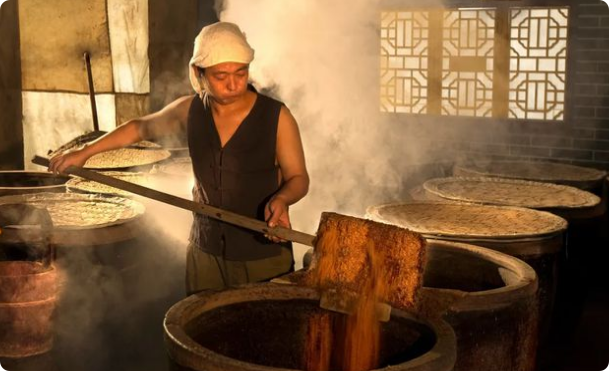
- END -
[Focus] Yanbian Tianheng Medical Technology Co., Ltd. is officially established

On July 25, Yanbian Tianheng Pharmaceutical Technology Co., Ltd. was formally esta...
Some netizens came to Guangzhou to scrape the tornado, and the meteorological department responded
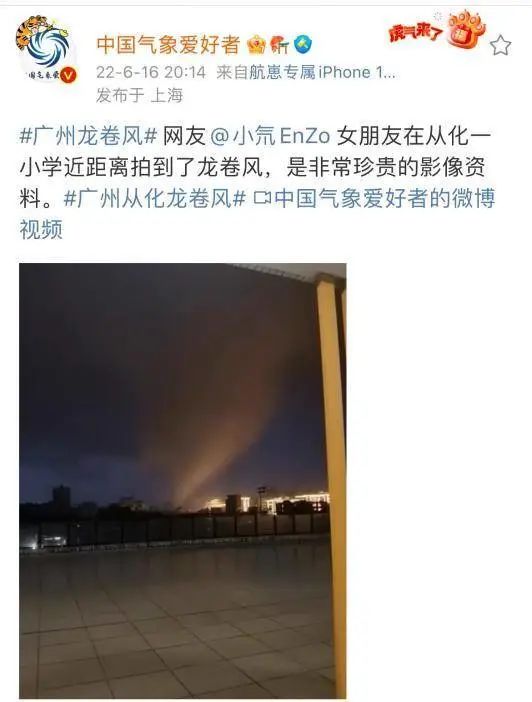
June 16thWeather Science Blog Lord@天 天 天 天Disthy some netizens in Guangzhou ar...